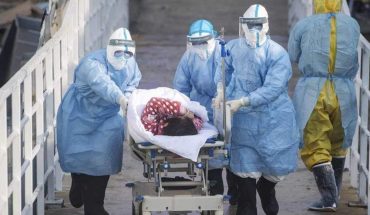President Donald Trump’s taxes dramatically increased U.S. output, just as the global economy was cooling, undercutting demand. That lowered prices, creating a clear split between companies like Nucor Corp., which use cheaper electric arc furnaces to recycle scrap into steel products, and those that include US Steel Corp., with more expensive legacy furnaces.
However, since Trump announced tariffs 16 months ago, US Steel has lost nearly 70% of its market value and left two U.S. furnaces inactive in mid-June that could not operate profitably at the lowest prices since 2016. Meanwhile, Nucor, with a drop of about 20%, has touted $2.5 billion in expansion projects.
Trump’s actions probably “accelerated” an inevitable “evolution,” Nucor’s executive chairman, John Ferriola, said in an interview last month. “Are some companies going to suffer? Absolutely. “Let’s see that some capacity disappears, I’m sure of it.”
Last July, Trump was on a makeshift stage at a U.S. steel factory in Granite City, Illinois, and was excited when workers applauded the tariffs. By that time, the company had already restarted one of the two blast furnaces in Granite City and promised that the second would soon be brought online.
“Workers are back at work, and once again we are pouring new American steel into the backbone of our country,” Trump said during the hour-long program. “WE. The steel is back.”
Since then, however, there has been a somewhat different outcome.
With stronger steel manufacturers aggressively increasing the ability to gain market share, a drop in demand has left older and more expensive blast furnaces in the United States Steel and AK Steel Holding Corp. who struggle to compete, even with foreign steel removed from the equation.
“Be careful what you want,” said Timna Tanners, a Bank of America analyst who called the industry’s drive to add capacity without enough “Steelmageddon” demand. She said it was “ironic” that tariffs “punish some steel companies.” . ”
A U.S. Steel spokeswoman declined to comment, while AK Steel said its products have little overlap with EAFs, and that additional capacity will further pressure imports.
As expected, tariffs reduced steel imports, generating more demand in 2018 and boosting profits. With that cash in hand, the added money from Trump’s corporate tax cut, and the confidence that protectionism is here to stay, domestic producers began to add more capacity than they would otherwise have.
The problem: this year, with the cooling of the global economy, demand and prices have fallen. This gives an additional incentive to EAF companies with profit margins and higher balance sheets to aggressively gain greater market share.
“Not all plants are the same,” said Mark Millett, CEO of Steel Dynamics Inc., who in November announced the construction of a new $1.8 billion EAF plant in the Southwest U.S. “Not all projects are the same.”
Suppliers of blast furnaces are sounding the alarm. In exposing his vision of Cleveland-Cliffs Inc. iron ore at a recent conference, CEO Lourenco Goncalves painted a bleak future for what makes up the overwhelming majority of its current customers.
That’s why Cliffs is investing $830 million in a plant based in Toledo, Ohio, which will produce hot-briped iron for electronic arc furnaces managed by firms like Nucor, Goncalves said. They invested in the plant because “we could see the future of steel manufacturing in the United States,” Goncalves said in New York last month.
Many “high ovens will go out,” he added.
U.S. Steel is trying to show investors that they can overcome their legacy blast furnaces. In February, it announced a restart of construction at an EAF facility in Alabama. And in May, the company said it would spend $1 billion on breeding facilities in Pennsylvania to produce more high-strength steel for the auto industry.
“Less efficient capacity should disappear, but there is no guarantee that it will disappear permanently,” Bank of America tanners said. “Probably doesn’t come down without a fight.”
translated from Spanish: Trump’s tariffs costing U.S. steel $5.5 billion
July 8, 2019 |





